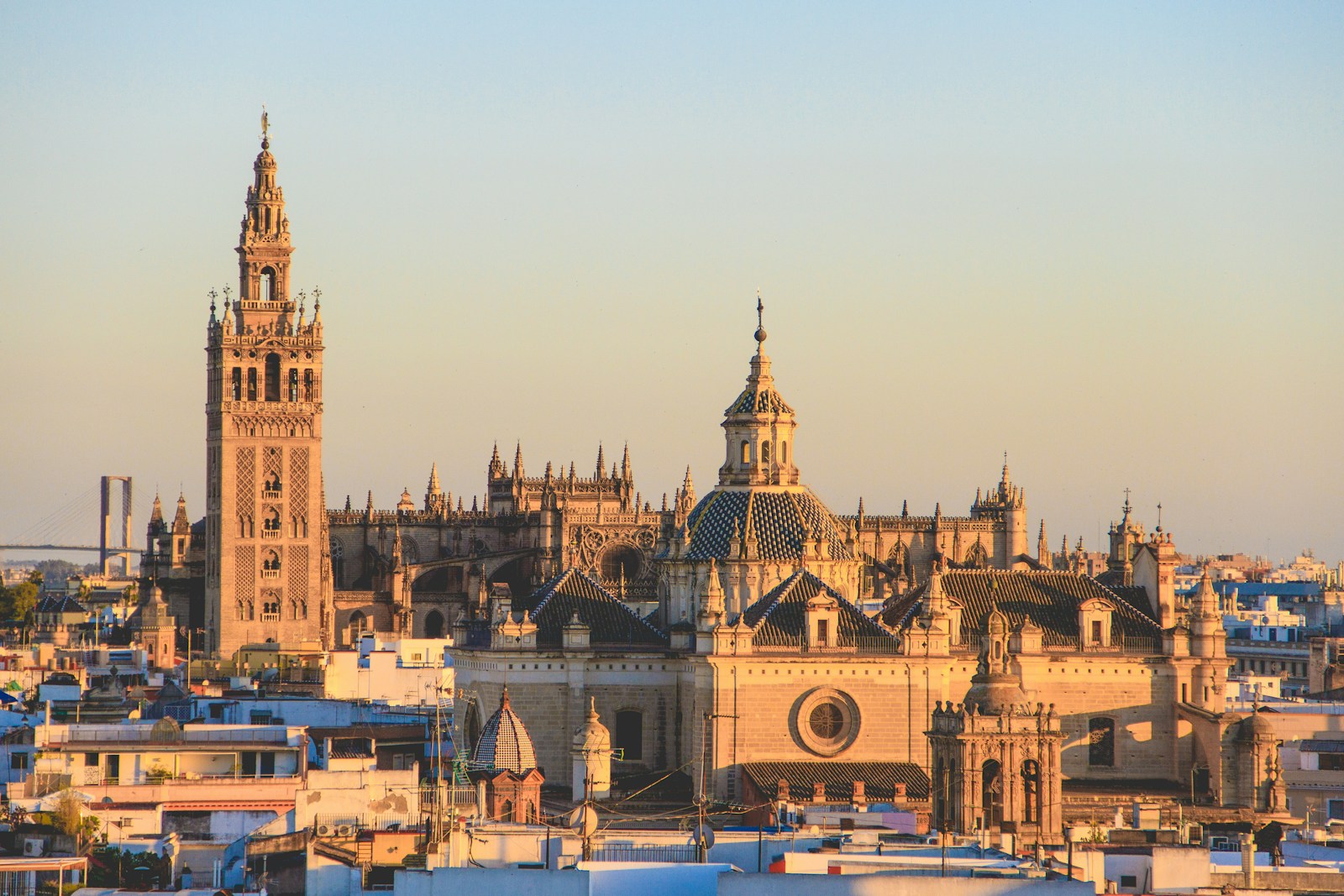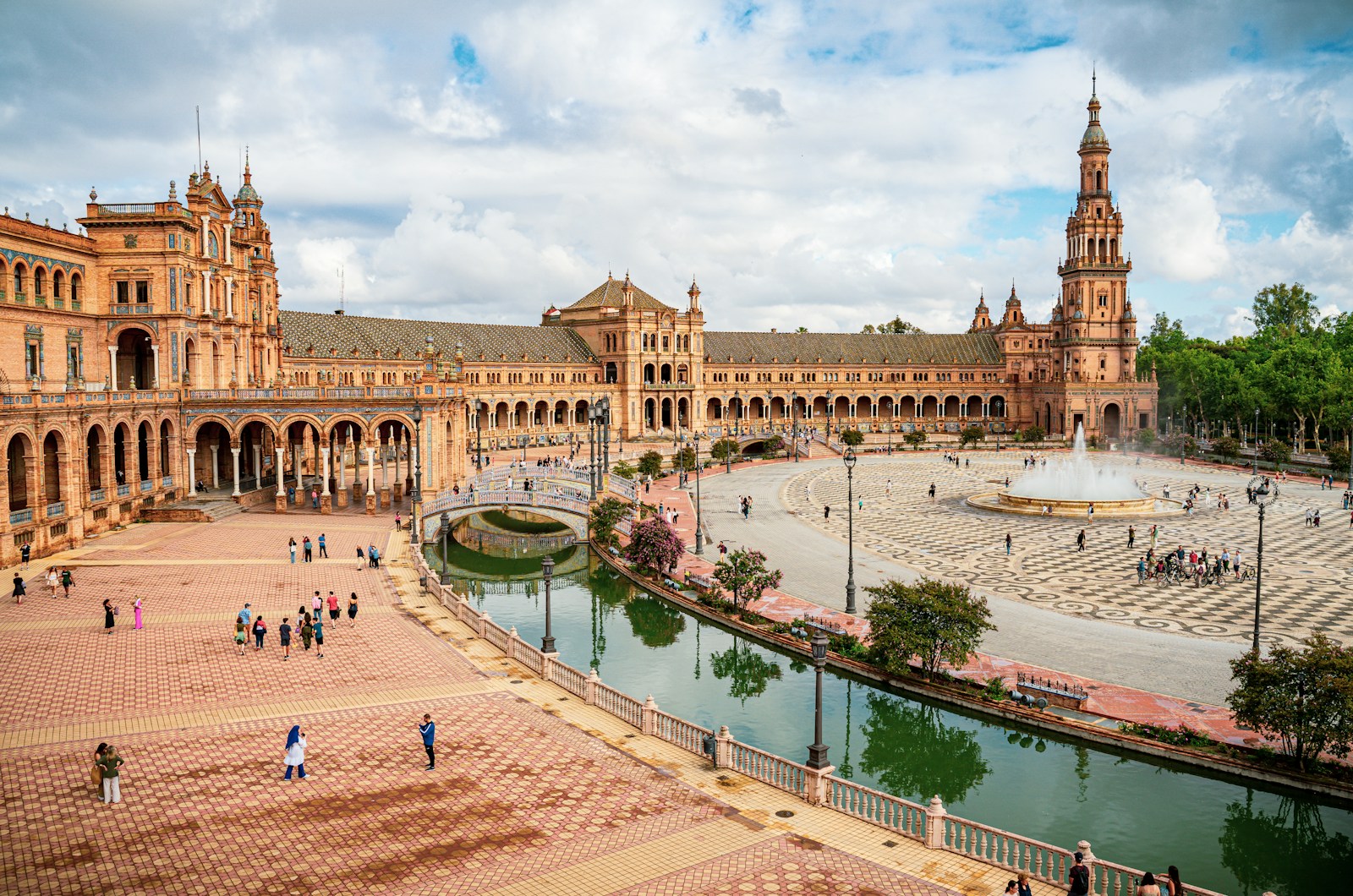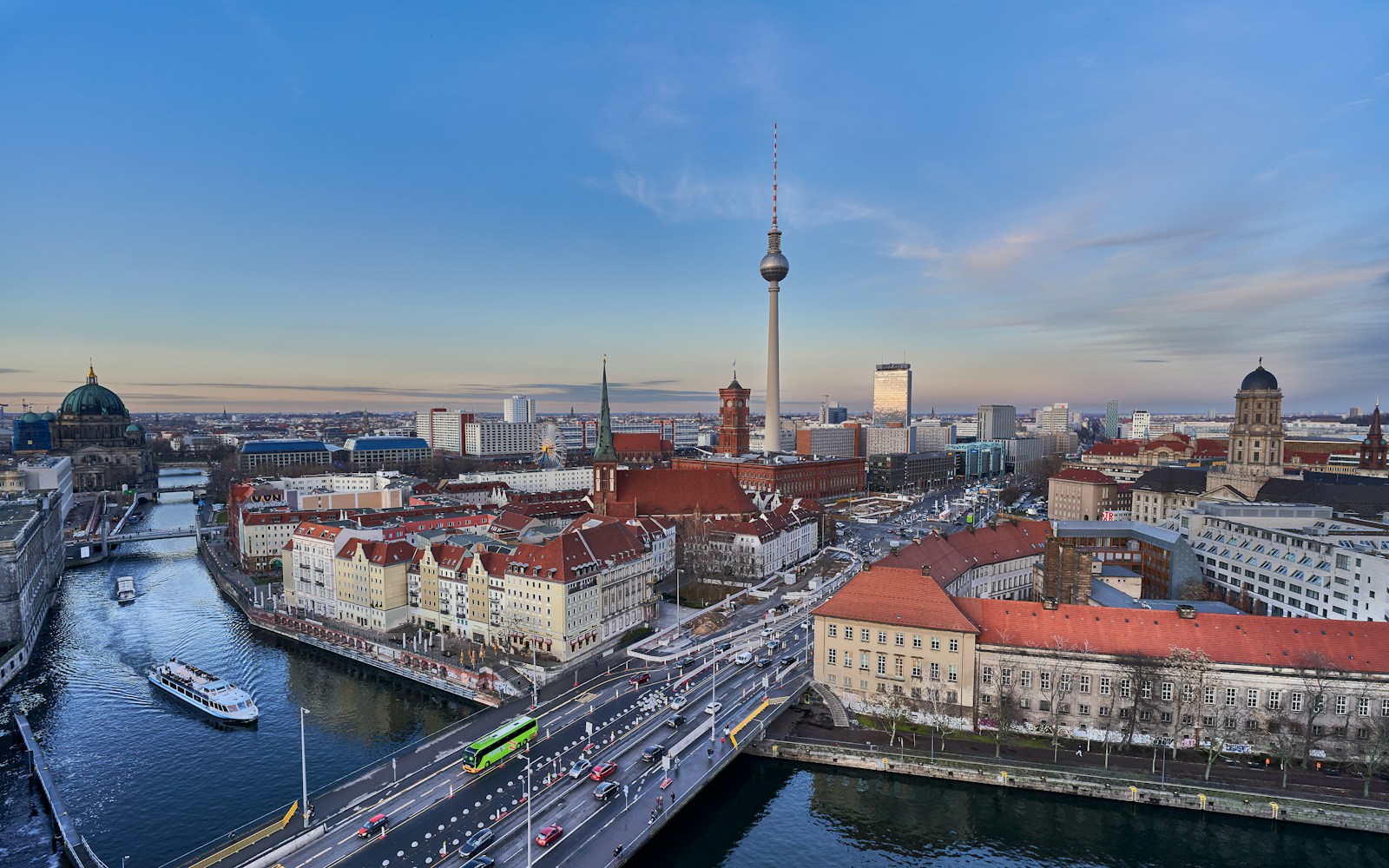The Alhambra is one of the most outstanding architectural masterpieces which have earned the title of the ‘eight wonder of the world.’ It was among the beneficiaries of the new seven wonders of the world voting exercise and to date, it is the most popular monument in Spain. In 2017 it scaled that figure to 2. 7million tourists, which proves its unchanging popularity. Now many people are asking the question how the Alhambra can be special? Though it is a question that can be asked in a concise manner, it is indeed a question that demands elaboration because the answer is far from simple; it is a truth heavily laden with history and culture, a truth that is best expressed in the architectural design of the structure in Bagan.
A One of its Kind Historical and Architectural Marvel
Strategic Location and Symbolism
An important aspect of the planning of any such building was its location and the Alhambra was no different as it was built on the al-Sabika hill for tactical and probably, for philosophical reasons as well. Being able to observe the city of Granada and the surrounding locations, it was an ideal place from which to defend. This positioning made it possible for the Nasrids to display their prowess and authority over the said area. The analyse of the location wasn’t only rational, it had a certain value as a symbol as well. Thus erecting their citadel on a hill the Nasrids were indicating their authority and, simultaneously, cultural superiority aspirations. The view from the Alhambra showing the well cultivated fertile planes and the snow clad Sierra Nevada mountains in the back ground is a view that is a combination of a master piece of nature complimented by the hand work of man.
That is why this site was the focus of the artistic and cultural revival that characterized the Nasrid dynasty.
A Multifaceted Marvel: These could be Citadel, Palace and Fortress.
Like any other architectural structure, the Alhambra cannot be described specifically as a citadel or a palace or, a fortress, but a combination of all three. This was a rather complex construction for its time as it had a military application as a fortress, a living palace for nobility, and an administrative facility. The term Red Castle which is derived from the Arabic: Qal’at al-Hamra actually relates to the reddish colour acquired from the reddish-brown material called tapia a rammed earth. The material used was chosen for its appropriateness and the color had both functional and symbolic qualities to symbolize the Nasrid dynasty’s relationship with the earth and their Islamic lineage. Therefore the architectural design of this palace is a clear example of Islamic style of architecture for it evidenced by the intricate stucco works, fabulous tiling mosaics, and wooden ceiling work in geometric shapes.
The Alhambra is a prime example of how every feature of architecture aims at defending the structure, creating a beautiful view, or having a special significance. Thus, the use of different elements ensures the balanced and coordinated composition creating distinctive and inimitable architecture of the Alhambra.
Its History Throughout the Ages
The latter part focuses on the emergence and development of the Nasrid kingdom of Granada.
Described by some authors as a fortress-palace, the Alhambra has always been associated with the general history of the Islamic dominance in Spain. The effect of the Islamic state of the area was diminished in 1031, when the Caliphate of Córdoba collapsed which led to forming of the taifa kingdoms in the Iberian Peninsula. These smaller monarchies often found themselves in conflict with each other and threatened by the Christians’ attempts at reconquering. Al Andalus continued to be ruled by the Muslims right up to The Kingdom of Granada under the Nasrid dynasty of kings. This period was also quite violent, but there was also a lot of great art, and an influx of rich culture. The Alhambra which was built under the rule of Al-Ahmar to a significant extent reflects the idea of power and the desire to emphasize on the specific cultural traits of the given people.
Based on this it can be gathered that the Nasrid rulers wanted to have a symbol that embodied their class and culture. It was a royal palace, and a seat of learning, wisdom, and art, where scholars; poets and artisans from all over the Islamic empire congregated. This population therefore brought back the cultural revolution of Granada making the alhambra to represent the prosperity of that region.
Becoming Residence of the Royals and the Period of Development of Arts
Such was the decisive Al-Ahmar who transferred the royal palace from the Albaicin to the Alhambra, thus changing the face of Granada both in terms of development and culture. Apart from giving an Alhambra a new administrative and ceremonial building the construction of the Alhambra also intensively expressed the economical and artistic power of the Nasrid dynasty. It had many palaces, beautiful gardens and of course fortifications all of which served as overt displays of power to the native people as well as the guests from other parts of the world. That is why the complex became the arena of the enactment of Nasrid domination together with the manifestations of its refined culture. The latter period of the artistic development of Moorish art was defined most notably by the merging of Andalusian, North African and Islamic art.
This influenced the Alhambra’s architecture style and decoration with regard to such things as the muqarnas which are similar to stalactites, and scripts and curls. Styling of all these articulated features was not only artistic but also gave a symbolism that was coded in most of them as related to Islamic cosmology; the divine order as well as the role of the ruler as a just and wise leader. Thus, the Alhambra also embodied an ideal of the Nasrid dynasty as organization of the prosperous kingdoms.
National Monument and Resilience
The Most likely, this architectural jewel best reflects the Nasrid palaces Mexuar, Comares, and Leones. Alhambra had its’ unique roles and looks corresponding to social stratification and the essence of Nasrid culture. The Mexuar Palace needed to be declared as a functional palace that meant it primarily being used for the administrative and judicial affairs of the kingdom. The Comares Palace, which is noted for a tranquil Patio de la Lgrimas and a fountain , was the site of politics and monarchy manifestation. Although the Palace of the Lions was a private residence of the monarch, or a royal retreat rather, its design and the beautiful courtyard with the lion fountain was an unmistakable manifestation of the ruler’s’ divine status. Nevertheless, the interesting history of the Alhambra as a palatial city and fortification was drastically changed in 1492 when Spain’s Catholic Monarchs Ferdinand and Isabella seized control of Granada.
This marked the pull out of Muslims from Spain and also the start of modification of the Alhambra to its current form. To learn more about this period and the Alhambra in particular people should know the facts that the Catholic Monarchs turned the Alhambra into a manifestation of their victory; areas of the complex were repurposed for Christian use, new constructions were added to the Alhambra complex such as Convent of San Francisco. Emperor Charles V later on commissioned a new palace in renaissance style in the Alhambra compound although having Christian and Islamic motifs. Albeit belonging to the later type of constructions, this palace was never finished and it represents the multi-layered cultural and political context of the post-conquest Granada.
These are the times which can be characterized by periods of neglect and periods of restoration of the cultural heritage.
The Alhambra Structures and buildings that were built in fourteenth and fifteenth Century, they suffered a lot of delay during the eighteen and nineteenth Century until well into the twenty Century. English occupation during the Napoleonic Wars proved to be a problem as the French troops utilizing the site caused near destruction. But, due to symbolical significance of the Alhambra as one of the most significant pieces of the Spanish culture and history, attempts to preserve and restore it were made. In even 1870, the Spanish state proclaimed the Alhambra a National Monument to begin with the cultural assets defense process and then was declared a World Heritage Site in 1984. The restoration goals included the Alhambra’s condition to its pre-earthquake state while at the same time revealing earlier strata.
Presently, all the structure of the Alhambra is protected by the status of the World Heritage Site and is famous for its Great Significance. Indeed it is not a causality of a mere historical issue but has become a symbol of historians as well as being a historical landmark the complex is carved in modernity as a real life story of a structure that still stands as an icon in the middle of the expanding society. The Alhambra is still a subject of aesthetic, historical appreciation as well as tourism by people from all over the world.
Exploring the Alhambra: As a Visitor’s Guide, this work able to present and analyze how global networks and policy shifts affects societies and cultures and how new media allows and facilitates cultural exchange.
This betrayed an architectural and monumental nucleus that emerged from the Towers of the Alhambra.
Towers are one of the distinctive elements of the Alhambra, while every tower in the fortress has its role in the structure’s defensive or emblematic functions. The construction to the west includes the Torre de la Vela which is particularly important if for the fact that it was from this place that the Christian flag was hoisted once the Reconquista was complete. Powder Tower: La Torre de la Polvora and; Noblemen’s tower: La Torre de los Hidalgos were designed as well for defensive purposes as for residing. The Torre del Homenaje, the tallest tower, was an emblem of the ruler or the head of the specific ruling that used it. Along with these walls, towers comprised a rather strong and impenetrable fortress, which would guard the Alhambra from possible threats.
The layout of the towers also supports the mix and match of the need for warfare and the beauty of structures. They are decorated at the exterior with ornaments like the soles; work and stucco in the walls of the Alhambra. These towers also hold some platforms from where one can get to see the beautiful city of Granada, the Albaicin district, and the distant snow-topped Sierra Nevada ranges in the South. These overwhelming reaches show how the Alhambra sat securely on a high vantage point that looks at the city.
The Alcazaba: A fortress of a military nakne
The most important section of Alhambra that provides a clear view of the fact that Alhambra primarily functioned as a military fort is the Alcazaba. The strategic victory of this construction was located on the top of the hill, so a defenders could see the enemies approaching them from a distance. The Alcazaba has a fairly plain style and all the elements that are present such as thick walls, towers, and the narrow corridors are all easily defendable. It was around the Plaza de Armas that was located in the interior of the Alcazaba that the soldiers used to assemble. The structures of the Arab houses and soldier quarters, dungeons, and barracks provide best knowledge of the austerity the military men used to live in. The group living facilities are of military design and simplicity however the landscaped gardens, added later, bring an element of calm to the surroundings.
Besides, it was actively used as a military fortress not solely after the Nasrid dynasty was over, but also by the Catholic Monarchs along with Army of Africa. Today the Alcazaba testifies that the Alhambra was primarily both, the residence of the Spanish kings and a military fortress. Preservation of this wonder enables anyone who desires to step in and feel and work under the situations and conditions that people who defended this place went through.
Palaces and Courtyards of the Alhambra
The Mexuar Palace: Poli/judice
The Mexuar Palace is considered the smallest palace complex and is not as well-preserved today as the Alhambra or Generalife palaces; however, the Mexuar Palace is important to the history and culture. This one was erected by King Ismail I as the palace and as the center of the Nasrid administration. The planning method is much more serious and pragmatic compared to the other palaces according to the function of the palace. The chief hall of reception, commissioned for political session and judicial trials, preserves original enameled ornament and carved wooden fretwork. These, baroque ornamentations bear the aesthetic sense and the level of workmanship of the Nasrid workers. Thus, one of the main prophecies of the Mexuar Palace is not so much to function as an administrative and judicial centre of the town as a political authority symbolically ruling over a territory.
This is the place where the Nasrid sultans discussed matters with their vizier, solved controversies, and dispatched justice. This role is reflected in the structure whose design is simple and, at the same time, elegant and a great attention is paid to the practical aspects. Even though it is a relatively small construction the Mexuar Palace reveals a part of the functioning of the Nasrid court and the rather intricate legal and political structures in the kingdom.
The Comares Palace: The Four Symbolising Royal Pride
Comares Palace or Palace of the Arrayanes is considered to be the ultimate example of the overall architectural and decorative elaboration of the Nasrid dynasty. The basis for the design is, therefore, the Courtyard of the Myrtles that is named after the myrtle bushes around the swimming pool. The water bodies, especially the pool in the courtyard reflects the structure around it and adds beauty as well as calmness to the palace. Throne Room or the Room of the Boiled Fountain is positioned in the Comares Tower and is one of the primary chambers of the palace. This was where the sultan would record his guests, receive visitors, and perform official state ceremonials and make decisions.
From stucco work tile mosaics wooden ceilings etc evident in the room to the gender, depicts the importance of these functions. The interior and the exterior design of the Comares Palace are specially practically based on highly symmetry, light, and water. Both of these elements are mystically profound in Islamic architecture and stand for paradise and divine order. Architecturally, the palace exhibits the ideology of the Nasrid rulers who wanted to build a place that was a representation of their ideas of the culture and politics of the time. For these reasons, the Comares Palace is not only a political facility but also a demonstrative object representing the Nasrids as the rulers and artists.
The Palace of the Lions: Power and Beauty and a Symbol
One of them is the Fountain of Lions or the Court of the Lions, the Harem, which is the most famous among tourists for its exquisite yard with the waterfall. The most famous picture of the Alhambra is hardly Ferry’s painting The Courtyard of the Lions surrounded by the Gallery of the Kings and the Hall of the Two Sisters; it features a central fountain with twelve marble lions. The concept behind the courtyard is the Islamic garden, especially with regard to the use of water, green areas and geometric shapes. The courtyards’ surrounding arcades with slim columns and stucco art make the court lighten up. Notably, the Palace of the Lions was built as the sultan’s living space; Mohamed V and his family lived there. Originally it was primarily a place to live and at the same time a demonstration of the sultan’s status and selective perception of esthetics.
The ornamentation of the palace is largely metaphorical; there are such elements as paradiesque decoration, celestial reference, depicture of the ruler’s sovereignty. The said edifice also has a number of royal bedrooms, all of which contain different features and images. These rooms have been intended for the sultan’s family and main colleagues that allow getting a view of the Nasrid patriciate’s more personal life. According to Arabesque and geometric designs that cover the walls, portals and ceilings, the Nasrid rulers wanted to build a comfortable and beautiful palace that conveyed a deep meaning.
About Generalife and Other Sites of Interest
Generalife Palace: SUNFLOWER COTTAGE
The Generalife Palace lying outside the main Alhambra complex was the summer palace for the Nasrid sultan. Its name which translates as ‘Garden of the Architect’ suggests the layout was designed in the form of a pleasure garden and a place of leisure. Also Generalife has exquisite gardens which were apple orchards in the past are famous for their beauty and the choice of the plants. Some of them are flowers, fruits, and aromatic plants; they make attractive scenery and provide interesting and appealing smells to the visitors. Unlike main Alhambra Palaces, this palace is remarkably plain as it was the Hunting Palace rather than the dwelling place. The largest of them is the Patio de la Acequia with a flowing aqueduct and is considered as the highest tourist attraction of the Generalife.
The area includes a swimming pool with a dimension of 50m that has pathways and flowers surrounding it and a feature of introducing the water jets to perform some music. There exists similarity in design, especially the courtyard that depicts the Islamic paradise form for water, green plantations and calmness. The Generalife also has a set of terraces where one gets to view beautiful scenery of the surrounding area. Such terraces found purposes in relaxation as well as in appreciating the beauty of the established terrains. The attractive architecture together with natural environment of the Generalife guarantees the harmonic atmosphere and thus, becomes one of the favourite places for tourists to find inspiration and tranquillity there.
The Partal: Advanced Discussion of Nasrid Residence
The Partal is the oldest building in the whole of Alhambra that is believed to have been built in the 13th century. Ideally, it was a palace designed for the Nasrid kings before the complex expanded to the other palaces seen today. The most surprising detail of the Partal is a kind of porch with five arches; it is related to the Nasrid style of architecture significantly. The Torre de las Damas or Tower of the Ladies another important structure is in the Partal region of the palace. Presumably the name of the tower stem from the French ‘’demière’’ meaning the last of a list or the ultimate – in this instance it would infer that the tower was home to the women of the royal court. This makes the Partal more appealing, for it not only has gardens and a pond around it, but is itself inviting to invitees.
The Partal is simpler than the later Nasrid palaces ; thus, its construction was dictated by the less refined and more primitive proclivities of the initial Nasrids. Though it is simpler compared to the earlier styles, it still has ornamentation like the tile designs and boolean work in stucco, which prove how skilled craftsmen of the period were. Historically, the Partal is outstanding because it is the oldest part of the Alhambra, and the analysis of the structures can speak about the early periods in the history of the Nasrid dynasty. This makes it provide a comparison with the complex structures that succeeded it and gives a glimpse onto the progress and development of the Nasrid style.
The Palace of Charles V:
Renaissance Grandeur is a hotel style that runs from grade one to grade twelve, and children starts grade one and drop out at grade twelve.
The phenomenal Palace of Charles V which was to be constructed soon after the recapture of Granada by Christians depicts entirely European trend as compared to the rest of Alhambra that has quintessence of Islamic architecture. The Gothic style of architecture in its construction as well as the Renaissance forms harmonized with the European themes and the evolving trends in this respect. Among the palace’s major attributes one should mention the circular court where two rows of columns in the Roman tradition are constructed. This is a design that is quite peculiar in the context of the Spanish architecture of the time and which was a reflection of the need of the Emperor Charles V to build a monument of his might. The construction of the palace was initiated in 1527; however, the construction only ended in the 20th century because of the lack of funds and political unrest.
Nonetheless, the Palace of Charles V has not only adapted to the basic principles of new construction in a very general way but also maintains its role in being a part of the Alhambra Crown of Spain. Several museums are located here, namely the Museum of Fine Arts and the Museum of the Alhambra which features important collection of Spanish and Islamic art; interacting with the centre of Hispanic-Andalusian Renaissance new palace and the architecture of the Alhambra removes the rich cultural and historical relationship between the Granada and Andalusia Arabs after the Reconquista. In its aggregate it characterizes the interpenetration of the Christian and the Moslem traditions as well as the difference in art and architecture’s exchanges. The Palace of Charles V thus plays the sign of recalling the splendorous and colorful past of this architectural and historical wonder of the Alhambra complex and the city of Granada.
Conclusion:
Alhambra now enjoys timeless popularity amp remain one of the most famous art and architecture works.
The Alhambra is not only an architecture but it is representation of Spain culture and Its diversities. The appearance of the Alabama is the material embodiment of the Artistic and Intellectual achievements of the Nasrid Dynasty is Spain, their history is the rich, complex and often tragic and bloody relationship between the Muslim and Christian cultures of Spain. Regarding the Alhambra, it can be stated that the aims of preservation and maintenance of historical interest have proved quite relevant in the course of time. Today, countless visitors from all over the world visit Alhambra’s palaces, gardens, and towers represented now. Every person is unique, so through them, many stories and memories can be associated with such a popular place, which is possible in case of this object.
The Alhambra’s combination of diverse attractions derived from surroundings, aesthetics, and historical aspects, indeed represents a great and rather unexampled travel site. It is a place that is in history but alive and preserved to give a glimpse and a sense of the diverse culture of Spain and the broader Islamic world. Visiting the Alhambra, one gets much more than a great work of art; it is a historical piece, which is still filled and shared with awe in the present age. Thus, symbolizing Culture and the essence of Arabs throughout the world, Culture and heritage and the strength of the human spirit.




